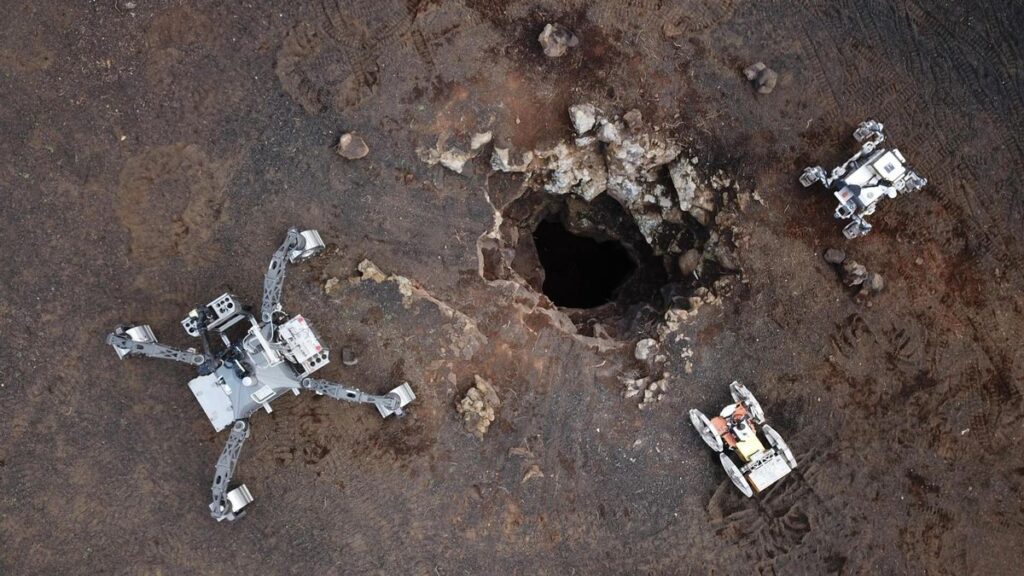Lava Tubes: Future Human Habitats in Space?
Lava tubes could become crucial shelters for humans during space missions to other planets, but how do we ensure their safety? A team of researchers has developed an innovative robotic system that maps and recreates these underground volcanic networks in 3D. The breakthrough technology, described in Science Robotics, was tested in 2023 in a volcanic tube northeast of Lanzarote in Spain’s Canary Islands.
Exploring Hidden Underground Worlds
“Lava tubes on distant planets may hold valuable clues about past geological events and potential extraterrestrial life,” explains Carlos Pérez del Pulgar, robotics professor at Spain’s University of Málaga and co-author of the study. “They could also provide vital shelter for human explorers.” While lava tubes exist on both the Moon and Mars, their hazardous conditions have prevented human exploration missions. To solve this challenge, researchers created a cooperative system of three specialized robots that safely map lava tube interiors.
Meet the Robotic Exploration Team
The system features three complementary robots: SherpaTT (a rugged, large-scale robot that enters first and retrieves others), LUVMI-X (a lightweight vehicle for 3D scanning and small payload transport), and Coyote III (specialized for navigating irregular terrain). While SherpaTT and LUVMI-X handle autonomous navigation and mapping, Coyote III uses ground-penetrating radar (GPR) to examine subsurface structures. The German-developed Sherpa and Coyote work alongside Belgium’s LUVMI in perfect coordination.
How the Lanzarote Mission Unfolded
The Lanzarote validation followed a carefully orchestrated sequence: First, SherpaTT and LUVMI-X collaborated to map the area around the lava tube’s skylight while Coyote III scanned from the surface using GPR. Next, LUVMI-X lowered sensor-equipped payloads into the light well, enabling 3D digital reconstruction. Using this data, Coyote III rappelled into the lava tube from an optimal entry point while anchored and powered by SherpaTT. Finally, Coyote III detached to explore independently, collecting visual data for detailed map reconstruction.
A European Breakthrough in Robotic Exploration
The Canary Islands’ volcanic tube was perfectly mapped through this robotic collaboration. “This represents one of the first described robotic systems specifically designed for lava tunnel exploration,” emphasizes Pérez del Pulgar. His team now works with Spain’s Geological and Mining Institute (IGME) to explore untouched lava tubes, including those recently opened by La Palma’s volcanic eruption – though current temperature conditions pose challenges.
While these robots currently operate on land, researchers hope to adapt them for space missions. The team’s ultimate goal is to make their robotic system a hallmark of European space exploration programs, potentially revolutionizing how we investigate extraterrestrial environments.


